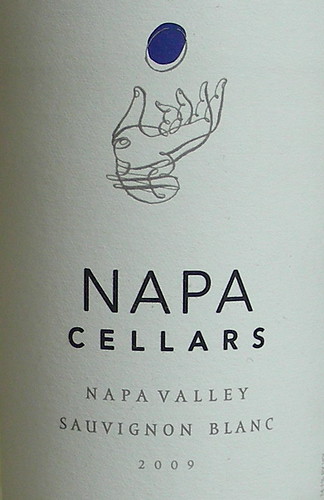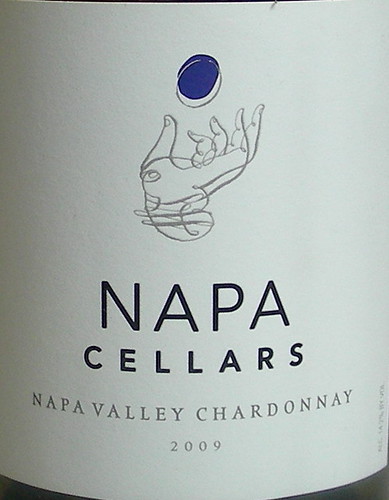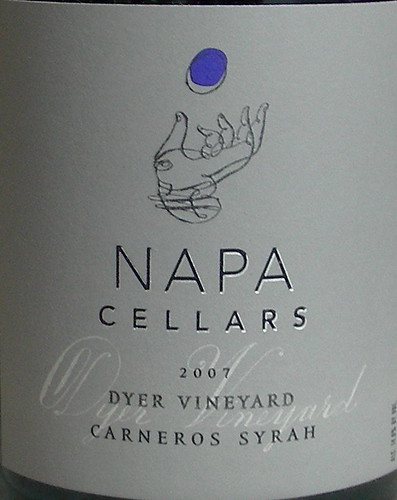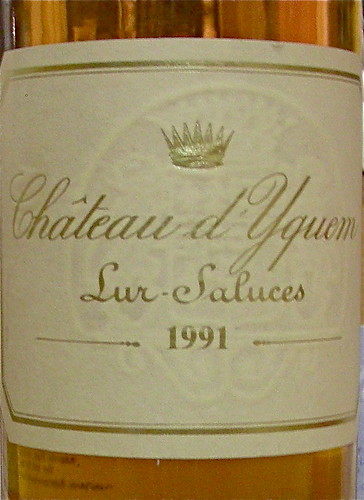Before the holidays I received four new release samples from
Napa Cellars, sent to me by
Balzac Communications. I thought these wines were pretty tasty, food-friendly, and really well-priced. For instance, you can currently find the 2009 Napa Valley Chardonnay for $13.99 at
Bevmo.
Although Chardonnay is the winery's most popular varietal, Napa Cellars produces wines from seven varieties including Sauvignon Blanc, Chardonnay, Zinfandel, Merlot, Cabernet Sauvignon, Pinot Noir, and Syrah. Grapes are sourced from different areas of the Napa Valley, and lots from diverse climates are often blended together to obtain a consistent quality and balance.
The director of Winemaking is Joe Shirley, a California native raised in Napa Valley. Before Napa Cellars, he worked at Sonoma Cutrer and Trinchero Winery. He's been also involved in research while he was studying enology at UC Davis. He co-authored a paper on grape seed extracts and also a study published in the British Medical Journal
The Lancet that showed that chocolate was a more powerful antioxidant than many common foods, such as prunes and blueberries.
Here are the wine samples that we tasted:
•
 2009 Napa Cellars Sauvignon Blanc Napa Valley
2009 Napa Cellars Sauvignon Blanc Napa Valley: sourced from vineyards in Yountville and the warmer Chiles Valley, the wine is cool-fermented in 100% stainless steel tanks. To retain the wine's acidity, no secondary fermentation is allowed . The wine exhibits a light yellow color and a fresh nose of grapefruit and citrus. On the palate, it is medium bodied with a rounded mouth feel and lively fruity flavors. Try it with
Steamed Mussels in White Wine broth•
 2009 Napa Cellars Chardonnay Napa Valley
2009 Napa Cellars Chardonnay Napa Valley: sourced from a collection of vineyards located in South Napa, Oakville and Atlas Peak. The fruit from the cool southern part of the valley adds acidity to the blend while the fruit from Oakville adds riper flavors. A quarter of the juice was cold fermented in stainless steel, the rest in small French oak barrels. The wine has a golden color and crisp braeburn apple aromas on the nose. On the palate, it is medium-bodied with peach & cream flavors and notes of vanilla spice on the finish. Try it with
Seared Halibut with Haricots Verts, Scallions, and White Wine Sauce•
 2009 Napa Cellars Chardonnay Mount Veeder
2009 Napa Cellars Chardonnay Mount Veeder: sourced exclusively from the estate vineyard atop Mount Veeder. Located west of Napa and Yountville, within the Mayacamas mountain range that separates the Napa and Sonoma valleys,
Mount Veeder is the largest AVA within Napa Valley but makes only about 1.3% of total Napa Valley production. It is characterized by a rugged mountain terrain, thin volcanic soils, and labor-intensive viticulture. Wines from the Mount Veeder AVA are typically powerful in structure. The Mount Veeder Chardonnay is produced from grapes that are hand-picked, crushed, pressed, fermented, and left on the lees for six months in 100% French oak barrels. The wine has a golden color with notes of caramel and tropical fruits on the nose. On the palate, it is rich and round with hints of bitter almonds and toasty oak on the finish. It is a more serious than the Napa Valley Chardonnay. Try it with
Salmon with Lentils and Mustard-Herb Butter.
•
 2007 Napa Cellars Syrah Dyer Vineyard
2007 Napa Cellars Syrah Dyer Vineyard: the Dyer Vineyard is situated on the sunny, northwest hillside of the cool
Los Carneros AVA. The vineyard has minimal irrigation. Grapes are cold soaked for 24 hour after crushing and skins are pressed off early to avoid excessive seed tannin extraction. The resulting wine is aged in both French and American oak for 16 months. It is deep in color with a nose of black cherry and pepper. On the palate, it is medium bodied, well balanced with a smooth mouthfeel, leaving flavors of sweet black berries, spices, and notes of oak. Try it with
Lamb Chops with Mushroom Wine SauceTechnorati tags: wine food & drink






